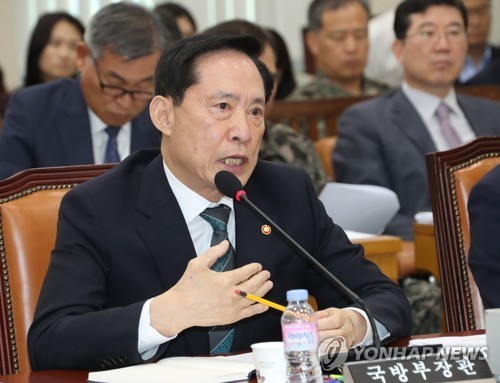
In a parliamentary session, the ministry presented its analysis to lawmakers based on its assessment of the North's statement released in the wake of its latest missile launch on Friday, source from the Yonhap.
"North Korea flaunted having neared the final stage of securing intercontinental ballistic missile (ICBM) technology and how it has accomplished the skills for and weaponization of the intermediate-range ballistic missile (IRBM)," it told the parliament.
The ministry clarified its initial report that was written somewhat misleadingly as if it was the ministry's conclusion that the North has almost reached the last stage for the ICBM technology.
"We have made no such assessment, but it's our interpretation of what the North has tried to assert by making such a claim," the ministry said.
"(The North) will continue such provocations as additional nuclear tests and missile launches to secure its nuclear capabilities. ... The Punggye-ri nuclear test site remains ready for a (new) test," it added.
Defense Minister Song Young-moo ruled out the redeployment of U.S. tactical nukes in a reversal of his earlier position that the idea can be weighed as an option to deter an increasingly provocative Pyongyang.
The parliamentary session was convened three days after the North fired off another intermediate-range Hwasong-12 missile over Japan into the Pacific. It flew 3,700 kilometers with a maximum altitude of about 770 km.
Asked to reaffirm his stance on the opposition-mooted idea of redeploying the tactical nukes, Song called it "not proper." The about-face came after President Moon Jae-in dismissed it last week, saying it would destabilize Northeast Asia and spark a regional arms race.
"It is not proper. It would be helpful if we do not re-dispatch it," Song said.
The minister said the "best alternative" is to independently build the "three-axis" system that consists of the Korea Massive Punishment and Retaliation, an operational plan to incapacitate the North Korea leadership in a major conflict; the Kill Chain preemptive strike platform; and the Korea Air and Missile Defense system.
"The situation has changed a lot since the withdrawal of tactical nukes (in 1991) and now we can get by as if we had the tactical nukes here," he said. "Without the tactical nukes here, we have the capabilities under the South Korea-U.S. alliance that transcends time and space."
Song was apparently referring to a wide range of the U.S. deterrence assets, including those stationed in Japan or other Pacific installations, which could be promptly deployed in the event of a conflict.
The minister also said Seoul is striving to ensure it can jointly share control of U.S. extended deterrence assets. He did not elaborate on the assets, but he said Seoul seeks to discuss the issue at the allies' top security talks such as the annual Security Consultative Meeting slated for next month.
Extended deterrence refers to the stated U.S. commitment to defend its ally by mobilizing all military capabilities, nuclear and conventional, against the North's aggression and provocations.
Such a commitment was called into question amid Pyongyang's beefed-up push to develop a nuclear-tipped missile capable of hitting the U.S. mainland. Some argue Washington may dither on defending its Asian ally under attack as its military action could put its own territory at risk.
Asked whether the North is capable of deploying the Hwasong-12 missile for combat, Song voiced doubts.
"I have doubts over whether the North would do that as its reentry technology has yet to be verified," he said.
The minister also gave a negative answer when asked if the North has the capability to strike the U.S. territory of Guam.
He, in addition, expressed skepticism over Pyongyang's ability to attack the continental U.S.
"Before the North's missile shoots up into the atmosphere, it will be detected by South Korea, the U.S. and Japan," he said. "I judge that it might be shot down before reaching Alaska or other major cities on the U.S. west coast."
During the session, Song also voiced unease over controversial security remarks by Moon Chung-in, the president's security advisor.
The advisor has floated the idea of scaling back South Korea-U.S. military drills in exchange for the North's nuclear freeze, a proposal seen at odds with Washington.
"I get this feeling that he is making such remarks as a scholar, and it is deplorable that he is not being thought of as a presidential security advisor," he said.
Also in its report to the parliament, the ministry explained that the North's missile launch Friday appears intended to flaunt its ability to strike U.S. bases to be used to augment U.S. troops in case of a contingency.
Commenting on the motives behind the latest launch, the ministry said the provocation was in part to protest a new U.N. Security Council sanctions resolution adopted last Monday to punish the North's Sept. 3 nuclear test and to show its defiance of international pressure.
The ministry added that the North has fired 19 missiles on 14 occasions this year and has conducted eight launches since the Moon administration took office in May.
























